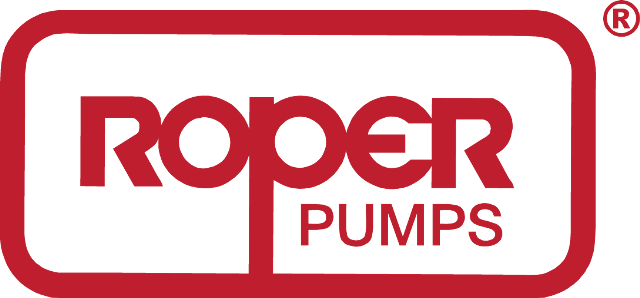A key focus of our business is the manufacture of customised flanges and special machined products. We work from customer drawings, and can in some instances offer a reverse engineering facility.
In addition to our customised services, we can also supply standard products in hard-to-source materials.
Customised Flanges
Customised or bespoke flanges can be machined from customers’ drawings to any special requirements that are needed. We also have a software facility for CAD reading. These CAD drawings can then be used to programme and set our CNC machinery. Without this facility, many extra hours would be needed for programming and set up. The end result for our customers – faster machining and lower prices for this kind of special work.
ANSI/ASME B16.36 – Orifice Weld Necks
Orifice flanges, normally, are Raised Face (RF) or Ring Type Joint (RTJ). Special tappings are machined into opposite sides. The flanges are principally used in conjunction with meters to measure the flow rate of liquids and gases in a given pipeline.
ANSI/ASME B16.47 (Series A & B)
26” to 60” inch nominal bore flanges
API 590 – Spectacle Blind
A single unit comprising of both a paddle blind and paddle spacer. Again, it is used to blank off a line but can rotate the spectacle to insert the spacer.
API 6A
American Petroleum Institute standard of performance related testing on designated, subsea wellhead components.
Blind Flanges
Blind flanges are typically used to blank off pipelines. They are bolted on to adjacent flanged pipeline assemblies, where their solid centre acts as a seal.
The blind flange can also be adapted by machining into it a smaller bore or a threaded bore. This reduces the bore of the pipeline.

Slip On Flanges
Slip on flanges have a bore that is fractionally larger than the outside diameter of the pipe to which it is to be fitted. The flange is slipped over the pipe and is then welded on both sides to fit into place. This then enables the pipe to be bolted to an identical assembly to connect both pipes together. Alternatively, the pipe can be blanked off by bolting a blind flange to the slip on.

Weld Neck Flanges
Weld neck flanges are easily identified by their protruding necks. Each flange neck is bored to suit the relevant wall thickness of the piping application on which it is to be used. Weld neck flanges tend to be used in higher pressure applications. Each weld neck has a weld prep at the end of the neck, so that is can be welded directly onto the piping. Once the weld neck is in situ, the pipeline can be blanked off using a blind flange or the bore reduced using a modified flange.

Socket Weld Flanges
Socket weld flanges are similar in both dimensions and applications to slip on flanges. The major difference is that socket weld flanges have an internal recess in which the pipe sits. This then gives a better flow of fluid through the piping itself. As a rule, socket weld flanges are more expensive than slip on flanges due to the extra machining required to manufacture them.
Socket weld flanges also tend to be used on smaller pipelines, typically ½”NB to 3”NB for 150lb – 600lb rated flanges and ½”NB to 2.1/2”NB for 1500lb rated flanges.

Lap Joint Flanges
Lap joint flanges or backing flanges are normally used with collars or stub ends. Each lap joint flange usually has a radius machined into the bore identical to that of the stub end or collar so that it can sit directly on it. The stub end or collar is welded on to the pipe leaving the lap joint flange loose behind it. These are then bolted to a similar piping assembly to join the pipeline together. If the pipeline needs to be cleaned or inspected, this kind of flange is perfect for easy dismantling, so that these operations can take place.

Threaded/Screwed Flanges
Threaded/screwed flanges have a centrally drilled and tapped hole in a variety of thread forms. They are then screwed on to a screwed pipe or fitting – they do not have to be welded to secure them in place. For higher pressure applications, they are sometimes welded to seal and secure them.
Threaded flanges are not suited to applications where heating or stresses are present, as leakage through the threads is possible.

Materials include:
| Stainless steels | 304 (S30400 / 1.4301), 304L (S30403 / 1.4306), 304H (S30409), 310S (S31008 / 1.4845), 316, 316L (S31603 / 1.4404), 316H (S31609), 316Ti (S31635 / 1.4571), 317, 317L (S31703 / 1.4438), 321 (S32100 / 1.4541), 321H (S32109), 347 (S34700 / 1.455) |
| Austentic Stainless Steels | 6 Moly (S31254 / 1.4547), 6 Moly (N08926 / 1.4529), 904L (N08904 / 1.4539) |
| Duplex / Super Duplex | S31803 (2205 / 1.4462 / F51), S32205 (2205 / 1.4462 / F51), S32750 (2507 / 1.4410 / F53), S32760 (1.4501 / F55), S31254 (F44) |
| Alloys | 20 (N08020), 28 (N08028 / 1.4563), 31 (S08031), 200 (N02200 / 2.4066), 201 (N02201 / 2.4068), 400 (N04400 / 2.436), 600 (N06600 / 2.4816), 601 (N06601), 625 (N06625 / 2.4856), 800 (N08800 / 1.4876), 801 (N08801), 800H (N08810 / 1.4958), 800HT (N08811 / 1.4959), 825 (N08825 / 2.4858), C22 (N06022), C276 (N10276 / 2.4819), C4 (N06455 / 2.461), B2 (N10665 / 2.4617), G30 (N06030) |
| Copper Nickel (Cu-Ni) | 70/30 (C71500), 90/10 (C70600), 90/10 (C70620) |
| Low Allows | F5, F9, F11, F22, F91 |
| Carbon Steels | A105, A105N, LF2, WPB, WPL6, WPHY42, WPHY52, WPHY60, WPHY65 |











